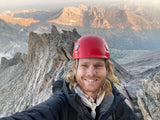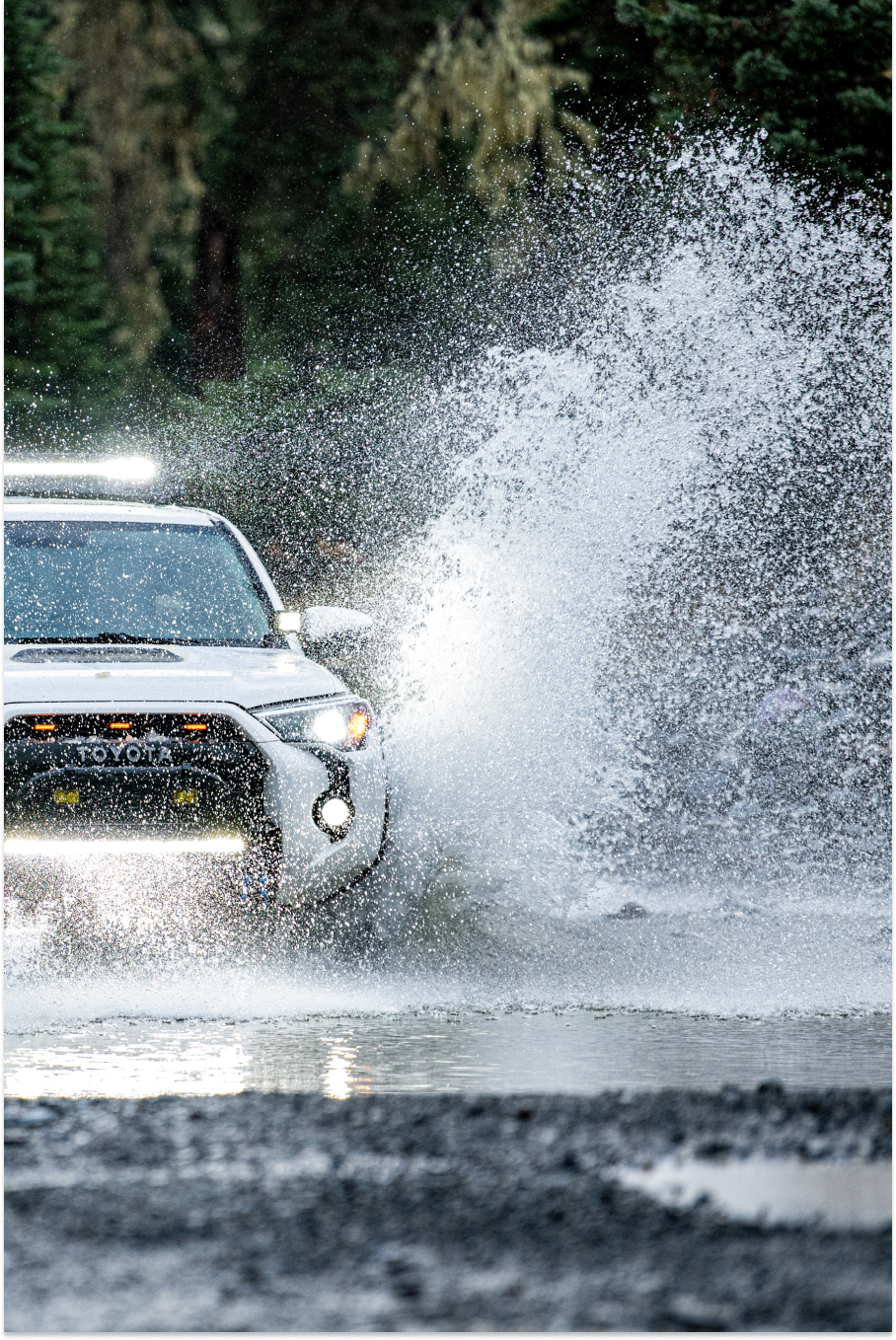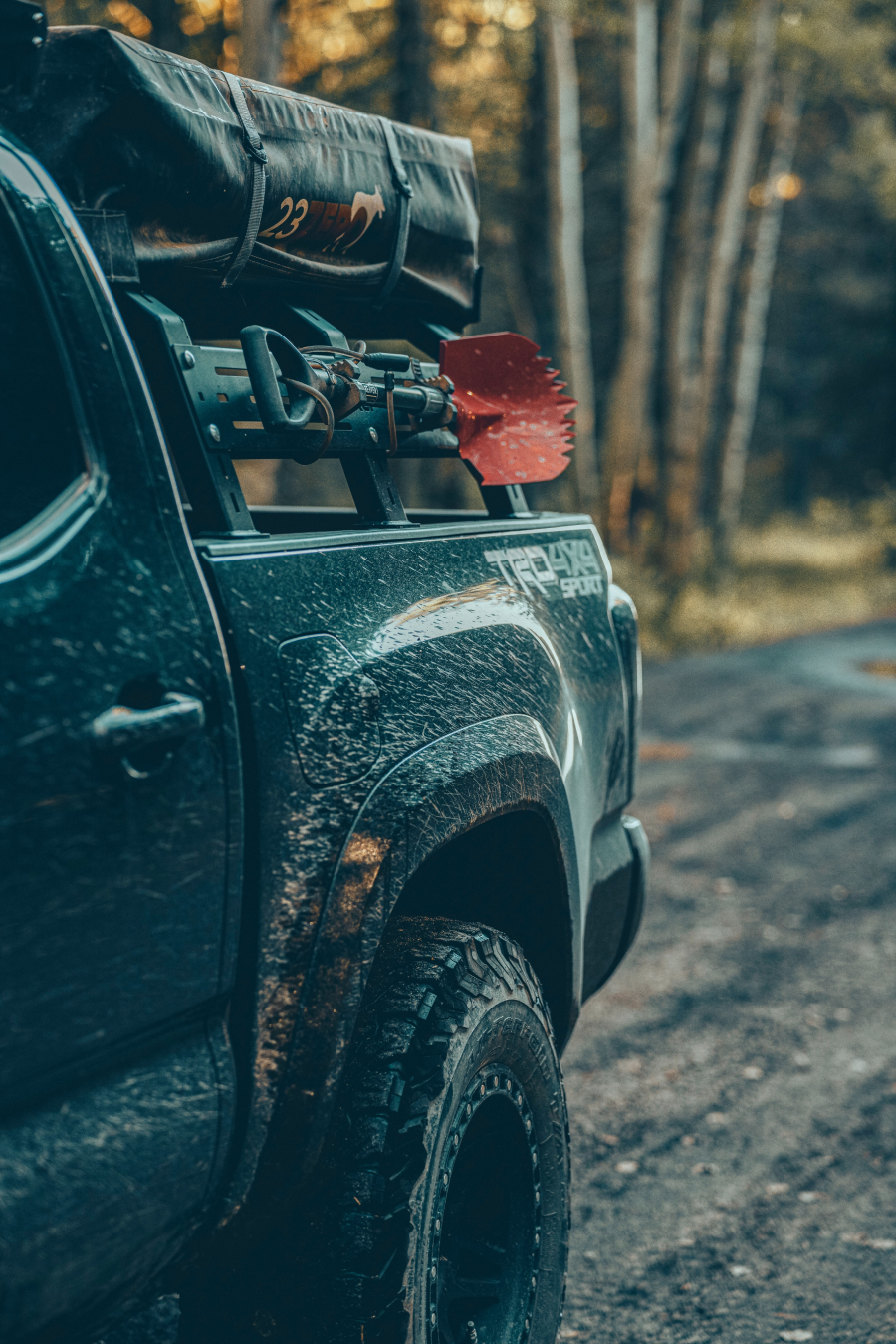Top 5 Free Camping Spots Near Moab

Overview
Moab, Utah is an outdoor adventurers paradise. From canyoneering to mountain biking, kayaking, rafting, rock climbing, slacklining, and more…
You can catapult yourself into an endless array of high-adventure sports in this desert mecca.
That’s not even mentioning the world-famous national parks nearby. The two most famous may be Arches (which is just a few minutes outside of town) and Canyonlands. But Bears Ears National Monument, Bryce Canyon, Capitol Reef, and Zion are all accessible in a day as well.
After a day of adventure in Moab, you can cap it off by relaxing under peaceful, wide-open dark skies and enjoy some of the best stargazing in the United States.
In the days of Edward Abbey, Moab was a sleepy desert town. But like many once-hidden gems, it has grown increasingly popular with outdoor tourists in recent years.
That means much of the once-free camping around Moab has been turned into paid or reservation-required sites. Free camping in Moab isn’t as plentiful as it once was, but there are still a few options for free dispersed camping, although some of them may rely on your own discretion, and others may be a bit of a drive from the town itself.
In this article, we’ll cover five free camping options to try near Moab. But first, let’s cover a few things to keep in mind before you go.
What to Know Before You Go
The spots listed in this article are all primitive campsites. That means no trash cans, no bathrooms, no electrical hook-ups, or any other amenities. If you’re looking for any of the above services, you’ll need to look for paid campsites. When searching for free camping, you have to be prepared to respect the area and take care of yourself, packing out whatever you pack in.
NOTE: That includes human waste! Most campsites around Moab require the use of portable toilets or wag bags.
Overall, remember that free camping is a privilege, and one dependent on us being good stewards of the land in return. A few reminders:
- Camp in established sites (look for fire rings and cleared areas), and at least 200 feet from lakes and streams
- Drive on established roads and hike on established trails
- Only set fires where permitted, and always use established fire rings or mounds
- Do not cut or gather wood from trees or shrubs. Bring your own firewood from in town, and keep any fires (when allowed) small
- Ensure coals and ashes are completely cool to the touch before leaving a former campfire
- Do not mark or otherwise scar the rocks. Sandstone is fragile and easily defaced, particularly after a rain
- In regions where portable toilets or wag bags aren’t required, deposit human waste in a cathole six to eight inches deep and 200 feet from water, camp, and trails.
- Pack out all trash, including toilet paper and human hygiene products
The Moab BLM Office is an excellent resource for questions about camping around Moab. You can reach out at +1 435-259-2100. The attached PDF also lays out a full map of the BLM camping sites around Moab. In total, the BLM maintains 26 campsites around Moab, but they currently all require a $20/night fee.
The vast majority of these sites (except for Ken’s Lake and a few Courthouse Rock sites) are first-come, first-serve. The BLM website also reports that within 20 miles of Moab, camping is only allowed in developed (and paid) campgrounds.
While there are still a handful of free camping opportunities further afield for the discrete and respectful boondocker, they depend on that latter quality (respect!) to stay open. Follow all rules and regulations, be discrete, and practice Leave No Trace principles at all times to ensure that what little free—or at least “no questions asked”—camping that does still exist in Moab stays open for years to come.
1. Manti-La Sal National Forest
GPS: 38.468199, -109.363763
Cell Service: STRONG (Verizon, T-Mobile, AT&T)
Manti-La Sal is about thirty minutes southeast of Moab, and it’s a tried and true favorite. Because it’s a national forest, you’ll also avoid the nightly fees at the established BLM sites. It’s a bit of a drive, but if you’re looking to get away from larger tourist crowds (especially in the summer) the free camping in this national forest is a stellar choice.
You’ll find free dispersed camping as soon as the La Sal Mountain Loop Scenic Backway enters the forest—past the established BLM camping at Ken’s Lake—but you can continue winding higher and higher up to find quieter sights (and better views) for miles. Even a 2WD with low clearance can access some of these sites, although high clearance and/or 4WD may be preferable for some of the sites further back.
Camping at La Sal is limited to 14 days, after which any site must be moved at least ten miles. You can learn more about camping in the Manti-La Sal National Forest HERE.
2. Klondike Bluffs
GPS: 38.740935, -109.733889
Cell Service: STRONG (T-Mobile, Verizon, AT&T)
Klondike Bluffs was formerly this author’s favorite place to camp near Moab, and it appears to have been unaffected by the BLM site fee changes. This site is located just off US 191 on the right, heading north out of Moab, right before you reach Canyonlands Fields Airport.
In total, it’s around 15 miles out of town. Drive as far as you want past the trailhead and you’ll find plenty of sites, some with existing fire rings. In general, it’s easy to access most of the sites in a 2WD vehicle, and the road is mostly sand and rock, but be wary after rain. The Klondike Trail itself—which stars to the north—is notable for having a number of dinosaur tracks along its length. It’s definitely one of the more interesting hikes near this campsite, so don’t miss it.
3. Horsethief / Mineral Rock Road
GPS: 38.590363, -109.840694
Cell Service: MODERATE (T-Mobile, Verizon, AT&T)
Nestled between Canyonlands and Arches (30 minutes to each) northwest of Moab, the dispersed camping along Horsethief Trail is a stellar choice if you’re looking to visit these national parks.
From US 191 you’ll head west on UT 313 until you reach Mineral Rock Road (on your right). Turn here, pass the established Horsethief Campground (paid sites), and keep going. After a mile or so you’ll see tons of turnouts with fire rings. These dusty stone flats offer sublime sunsets and solitude.
The first sites are easy enough to reach in a 2WD with low clearance, but the further back you travel you may appreciate higher clearance and 4WD or AWD capabilities.
NOTE: As of fall 2022, it appears some of the earlier sites along Mineral Rock Road are being stymied by the BLM’s $20/night fee. Some travelers have reported being able to camp here without issue, but driving further back may be required to camp unmolested.
4. Behind the Rocks Wilderness Study Area
GPS: 38.435963, -109.509295
Cell Service: MODERATE (T-Mobile, AT&T)
If you’re looking for a spot that’s even more off the beaten path, Behind the Rocks Road offers excellent free camping. You have to drive at least two miles to reach the section where camping is permitted (a sign marks this point) but after that, you’ll begin to see a number of campsites.
You can go quite far back in here, up to Picture Frame Arch and beyond, but high clearance, 4WD-required conditions can appear fairly quickly, and after heavy rain, the sandy roads can be tough to navigate, so be careful how deep you delve.
These sites are over an hour's drive from Moab (further, depending on how deep you go), so if you’re planning to roll into town every day, then this one might be a pain. But if you’re looking for a remote campsite that really puts you out on your own, you’ll find it here. There’s a plethora of opportunities to scour slot canyons, hit mountain bike trails, and hike up the spectacular sandstone fins, domes, and arches.
5. Copper Mine
GPS: 38.827396, -109.778821
Cell Service: STRONG (Verizon, T-Mobile) MODERATE (AT&T)
Further north of the main Klondike Trailhead and campsites, you can find another small area for free dispersed camping off of Copper Mine Ridge Road.
These sites are barely a stone’s throw from the highway (US 191) but go back for quite a ways, so there’s plenty of room here even on crowded weekend nights, and these sites don’t see much traffic anyways compared to areas closer to town. It’s only 25 minutes by car into Moab though, so it’s more than close enough even if you're heading into town for food and activities each day. The camping here is also closer to the Dinosaur Tracks Interpretive Site mentioned above.
NOTE: As of 2023 it appears Copper Mine/North Klondike is a paid BLM site, but many visitors are still finding free dispersed camping nearby. If you’re stymied, try heading further north along the 191 to Crescent Junction and CR-94 (38.878568, -109.806973).
Want to explore other camping spots near you in the Southwest? Check out our blogs How to Find Free Camping Near Me, and Free camping spots near Sedona how to learn the best resources for low cost camping.
Frequently Asked Questions
What is the best time to camp in Moab?
You can enjoy camping in Moab year-round. However, autumn (September to November) is usually considered the prime season for Moab camping. Temperatures are mellower than in the sweltering summer (hovering around 70ºF) but the river is warmed and there is no chance of lingering snow, unlike in some spring months.
How do I check for fire restrictions when camping?
The best resource for up-to-date fire restrictions is UtahFireInfo.Gov. The Utah State Parks Fire Restrictions page also offers helpful updates specifically for state parks (like Dead Horse Point), as well as tips about fire prevention when camping.
The Moab BLM Office is another good resource for local regulations, as well as any questions about primitive camping. You can reach them by phone at +1 435-259-2100 or by email at blm_ut_mb_mail@blm.gov. Their offices are located at 82 East Dogwood, Moab, UT 84532, and are open from 7:45 am to 4:30 pm.
Where can I get potable water in Moab?
Several gas stations offer free potable water. One is the Maverik on US 191 (38.558304, -109.543397), which has both free potable water and a free dump station. Another is the Shell at 2420 Spanish Trail Rd (38.528644, -109.502464) which has free potable water, a propane fill station, and shower facilities.
Farm & City Feed & RV Supply on Main Street (38.5599, -109.5469) also has potable water ($5 fee), a dump station, and propane fill.
Where can I shower in Moab?
Several businesses allow showers (for a fee) for visitors, including the Lazy Lizard Hostel ($4), the Moab Aquatic & Fitness Center ($12), and the Dowd Flats RV Park ($4). You can find an updated list HERE.
What is there to do near Moab?
There are a wealth of things to see and do near Moab. For starters, you can’t miss Arches National Park and Canyonlands National Park—two of the most famous parks in America. You’ll also need to check out Dead Horse Point State Park, which offers stunning overlooks of the Colorado River and canyon vistas.
Activities in Moab range from mountain biking on world-class trails like Slickrock, Porcupine Rim, and the Whole Enchilada to rafting and kayaking the Colorado and Green Rivers. Tours are available for all experience levels. Other activities include off-roading with quads and dirt bikes, hiking, rock climbing, and stargazing.
Where can I camp with horses near Moab?
Per the Bureau of Land Management (BLM) there are three reservable group sites with corrals that accommodate horses in the Moab area, Upper Onion Creek, Ken’s Lake, and Lone Mesa (all Group Site A).
These sites are reservable on Recreation.gov six months in advance and up to eight days before arrival. The Courthouse Rock Campground also accommodates horses and is available first come, first served. No water is available and any feed used must be weed-free
About the Author:
 Owen Clarke is an action sports and adventure travel journalist living on the road. His primary focus is rock climbing and mountaineering, but his work appears in over 50 international magazines covering a variety of niches. In addition to vertical sports, he also has a penchant for motorcycles and long-distance trekking.
Owen Clarke is an action sports and adventure travel journalist living on the road. His primary focus is rock climbing and mountaineering, but his work appears in over 50 international magazines covering a variety of niches. In addition to vertical sports, he also has a penchant for motorcycles and long-distance trekking.






